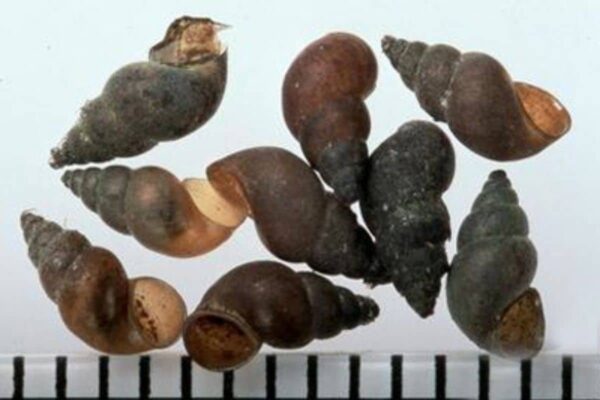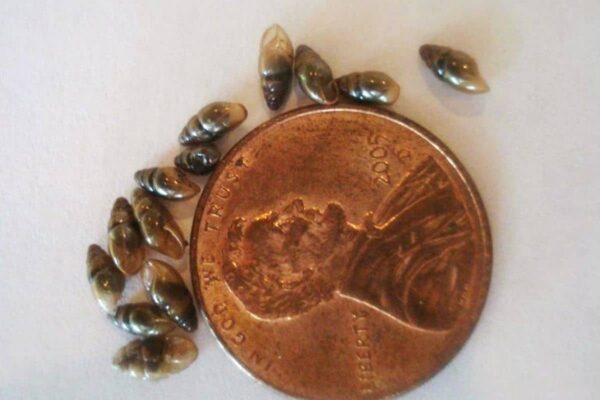New Zealand mudsnail
About This Species
The New Zealand mudsnail can live in a variety of habitats including lakes, rivers, streams, lagoons, estuaries, canals, ditches and water tanks. It can tolerate a variety of water temperatures and conditions but thrive in disturbed watersheds. They are often found living in high densities (greater than 400,000 snails/sq meter) and can disrupt the natural ecology by out-competing native aquatic snails and insects. New Zealand mudsnail are designated as a Provincial Containment species by the BC Provincial Priority Invasive Species List.
It is thought that the New Zealand mudsnail was transported to North America in the ballast water of ships arriving from Europe and Asia. It was first recorded in North America in the late 1980’s in Idaho’s Snake River. It is believed that the main method of spread of the New Zealand mudsnail has been through recreation boating and fishing. Due to its size and ability to attach to objects, it’s an ideal aquatic “hitch-hiker” that can be unknowingly transported to a new waterbody with ease.
New Zealand mudsnails can reproduce asexually, meaning the introduction of a single individual into a new habitat can lead to a full infestation. These snails can survive out of the water for weeks by laying dormant in their shells.
How to Identify
The New Zealand mudsnail is a very tiny aquatic snail, less than 5 mm long. The shell is typically light to dark brown in colour but may look black when wet. The shell of adult mudsnails usually have 5-6 whorls that lean to the right. They can easily be confused with other fresh water and native snails.

Take Action
Prevention is the best approach.
-
If you need advice about invasive species on your property or you are concerned about reported invasives in your local area, contact your local government or regional invasive species organization.

Clean, Drain, Dry
Learn about best practices
The Clean Drain Dry program empowers you to help reduce the spread of invasive plants and organisms to BC waters by following the clean, drain, dry procedure on all watercraft and equipment.
REPORT TO PROTECT BC’S BIODIVERSITY

Use the app
Observe and report to protect BC’s biodiversity

Report through this website
Use our form to tell us what you’re seeing and where.
















